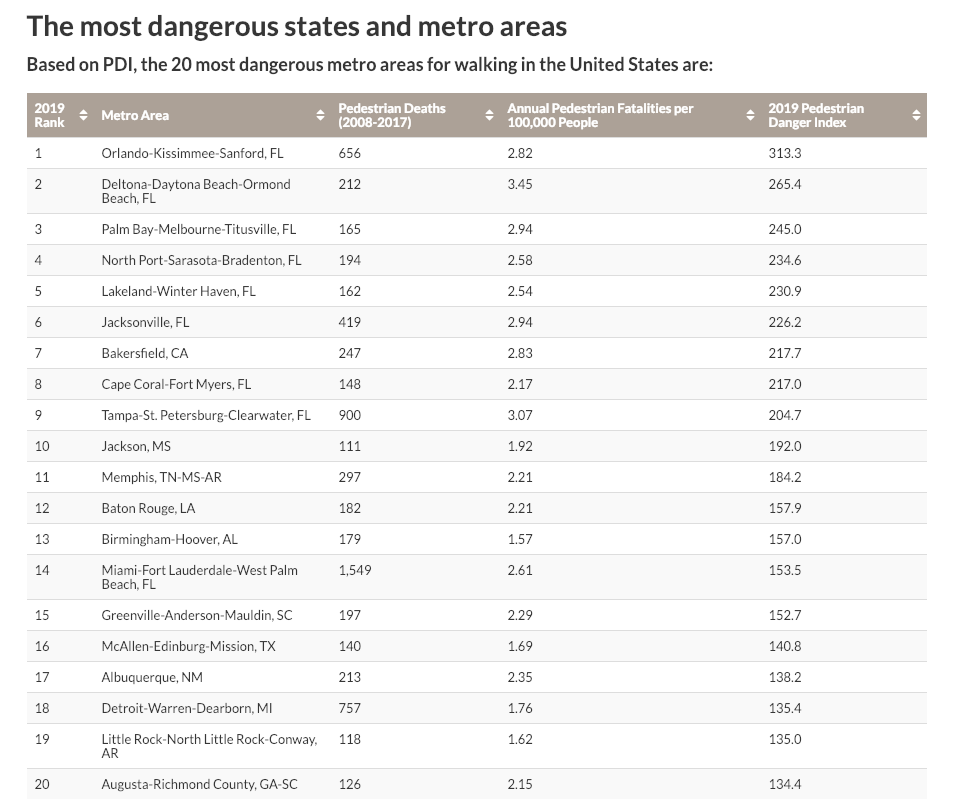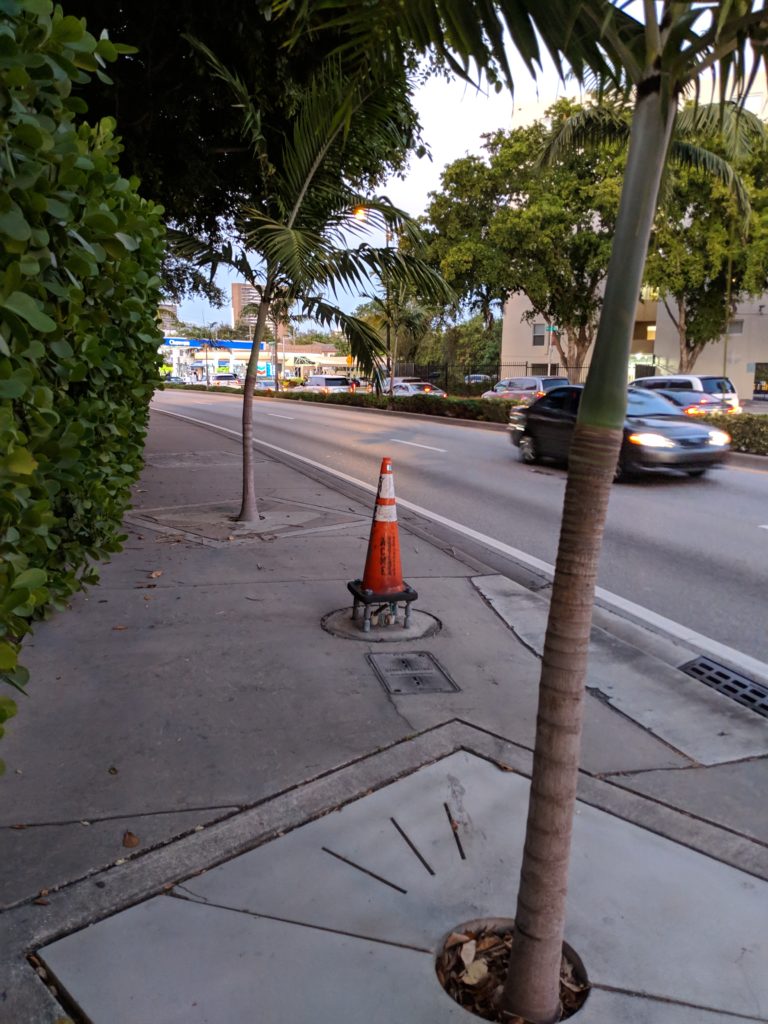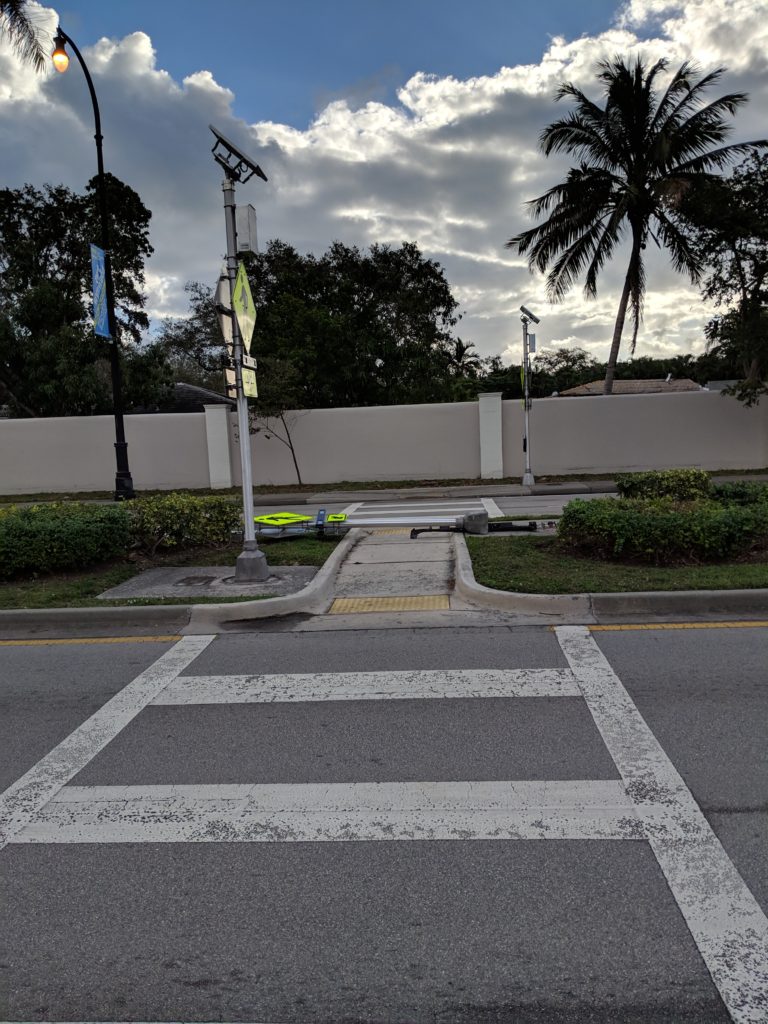According to the 2019 Dangerous by Design report by Smart Growth America, Florida is the most dangerous state in the country for pedestrians and cyclists. In fact, of 9 out of the 20 most dangerous metropolitan areas in the US are in Florida.

My family and I have lived in Miami’s Belle Meade neighborhood for the past 9 years and we have witnessed no less than 70 crashes which have resulted in cars hitting midblock crosswalks, light posts, bus shelters, traffic signs, medians, trees and people at very high rate of speeds. Several months ago my 5-year-old son and I were struck while crossing Biscayne Boulevard, in a midblock crosswalk, that wasn’t working properly because it was hit by a speeding vehicle over a year ago and never repaired.
In addition, according to the FDOT’s data there were at least 2,553 crashes reported from January 2011 to July 2018 from (36th Street to 87th Street). During that time at least 64 pedestrians and cyclists were involved in crashes according to the FDOT.
When the FDOT redesigned Biscayne Boulevard about 15 years ago, the focus was to move cars as fast as possible. Very little thought and consideration was given to the safely of pedestrians and cyclists when we redesigned and resurfaced Biscayne Boulevard. There are many areas along Biscayne Boulevard that do not have a crosswalk for 3 or 4 blocks. In some cases there is only 1 crosswalk every 5 or 6 blocks. There are also many sections along Biscayne Boulevard where cars are moving at 45+mph within 2-3 feet of pedestrians. We can do better than this.
Design Speed Matters
Our problem with Biscayne Boulevard lies in its design speed.
According to Strong Towns:
“Speed limits are not necessarily known during the design process of a new road as they are determined after the roadway is built by evaluating how the motorists use the roadway.
Before a new road is built, engineers choose a design speed to guide their decisions about the various geometric design features of the roadway. The geometric design criteria were developed in the 1940s. And for much of the time since, engineering practices have focused on moving cars quickly and efficiently. In other words, engineers value speed and volume over safety and cost.”
The speed limit on Biscayne Boulevard is 35 mph, but its design speed is closer to 45mph. If we want to make Biscayne Boulevard safer, seems like the speed limit and design speed should not exceed 30mph.

How can we make Biscayne Boulevard safer?
Luckily there are inexpensive traffic calming strategies we could implement rather quickly that would help reduce the design speed along Biscayne Boulevard. If some variation of these strategies were to be implemented, our main street would be safer for everyone (including drivers).
Here are some traffic calming options we should consider:
- Reduce travel lane width from 12 feet to 8 or 10 feet.
- Add on street parking. On street parking serves as a buffer and protects pedestrians from moving vehicles.
- Add crosswalks at every intersection
- Add protected bike lanes
Please join the Biscayne Boulevard Community at Legion Park on February 23rd at 11am to meet with the FDOT and walk Biscayne Boulevard.
There is yoga in the park at 10am and there is also the Saturday Farmers Market. Bring the family and let’s work together to make Biscayne Boulevard safer for everyone.
Please spread the word!
Below are images of Biscayne Boulevard crashes involving mid-block crosswalks, light posts, bus shelters and traffic signs. Many of the light posts and mid-block crosswalks have been broken for over a year and have not been repaired.









